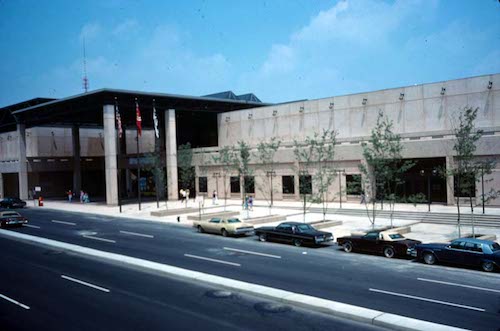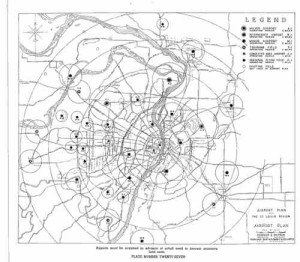The St. Louis Region Needs To Let Go of Fragmentation

On August 22, 1876 voters in St. Louis County, which included the City of St. Louis, voted on separation. It failed.
The vote took place 22 Aug 1876, and the initial count indicated that the separation question had failed by just over 100 votes. Supporters of separation then brought charges, including fraud, and a recount was ordered. The recount took four months so it was late 1876 before it was determined that the vote for separation had passed. The story of the split is really much more complex than that, so consult the reading list below for more in-depth material. (St. Louis County Library)
Other sources, including St. Louis Day by Day by Frances Hurd Stadler indicates the recount was finalized two months later on October 22, 1876 — 142 years ago today. Regardless of when the recount determined the measure had passed, it was in 1877 when the parties went their separate ways.
This was one of the worst things to happen to the entire St. Louis region. The City of St. Louis has suffered the most, but St. Louis County is now experiencing increased poverty, population loss, etc.
Earlier this year the St. Louis region dropped one spot to 21st:
Overall, the St. Louis metropolitan area, which comprises 14 counties and the city of St. Louis, grew slightly but at a much slower rate than other parts of the U.S., based on population estimates taken from July 1, 2016, to July 1 of last year.
The Baltimore area, which had been ranked 21st, swapped spots on the population list with the St. Louis region. The city of Baltimore saw a numeric population drop greater than St. Louis city, but Baltimore’s loss represented a 0.9 percent decrease, compared with a 1.4 percent loss in St. Louis. (Post-Dispatch)
On October 11th St. Louis Alderman Scott Ogilvie made a surprise announcement that he wouldn’t seek a third term next Spring. In his announcement he said this:
Government in the region needs to be completely remade from the ground up. It does not work in St. Louis City, it does not work in the poorer areas of St. Louis County. We accept that rich people get excellent services because they wall themselves into suburban enclaves and avoid engaging with the rest of the region, and we accept that poor people will have poor services because they are poor. We accept that the middle class will endure a series of choices driven by anxiety and fear rather than love and optimism.
In 2000, a year after moving here, I was riding my bike on a weekend as I often do in Forest Park. A driver began a confrontation with me that ended in an assault near Skinker and Forsyth. Afterwards, angry and annoyed but not particularly hurt, I called the police. The response I got was not, “Are you ok?” but “What side of Skinker were you on?” This is our regional government in a nutshell. It first asks not what someone needs, but where they live. What you get is determined by your address.
We largely got here by accident. But with decades of perspective on this dynamic, we all know it’s the central problem in the St. Louis region. It’s time to do something about it. My parting shot in my role as alderman is this: We need to erase all the artificial boundaries of City and County and Municipalities. The only way this region will ever work is if we are governed as one region, where everyone pays into the same pot, everyone has a seat at the same table to determine the regional direction, and resources are distributed equitably. Tinkering around the edges is metaphorically the same as rearranging the chairs on the Titanic. People are literally dying because of the way this region’s government is structured.
After 8 years in government, my wish is we stop tinkering around the edges of an obviously un-salvageable and routinely harmful regional dynamic – We should be the St. Louis of 1.3 million people we want to be. (Ward 24 St Louis)
I agree completely! I’m also hugely suspicious of anything funded by Rex Sinquefield, including Better Together.
I don’t know what the solution looks like, but I strongly believe doing nothing will continue to hurt the entire region.
— Steve Patterson



